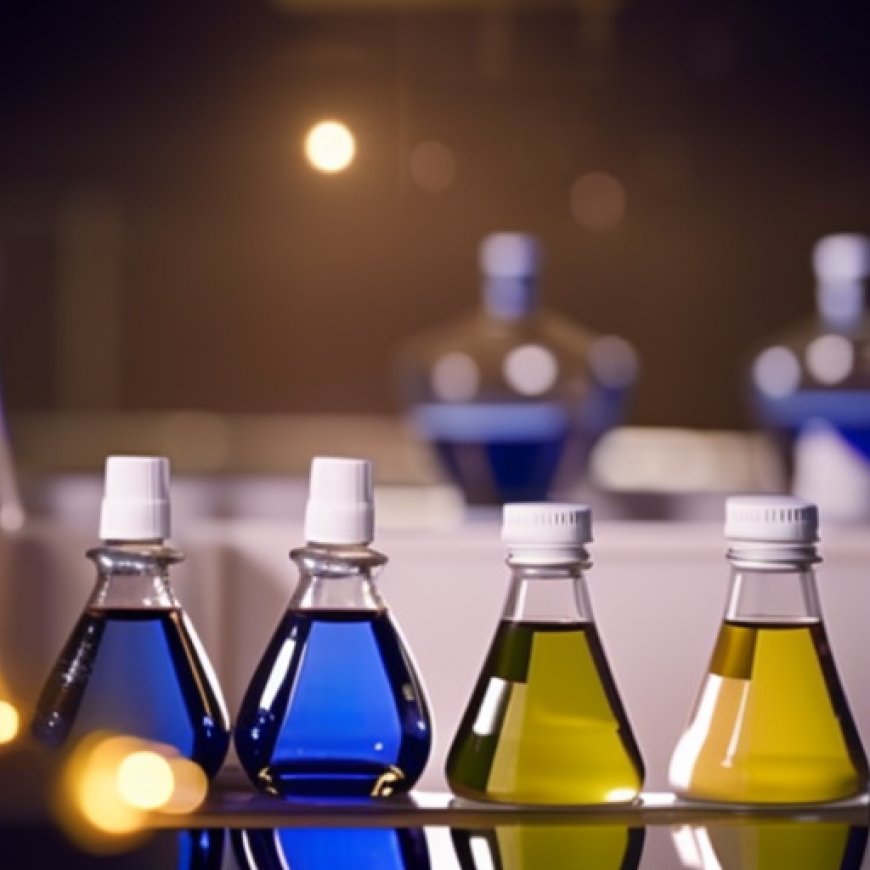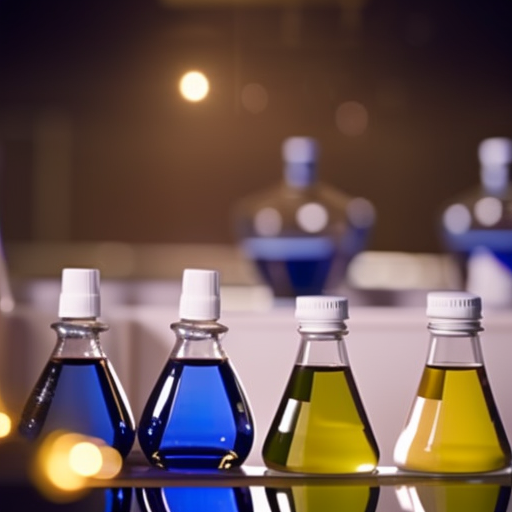How Antimicrobial Chemistries Contribute to Clean Water – American Chemistry Council
How Antimicrobial Chemistries Contribute to Clean Water American Chemistry Council


Access to Clean Water: A Report on Achieving the Sustainable Development Goals

Access to clean water is a basic human need for survival. One of the United Nations (UN) Sustainable Development Goals (SDG 6) is achieving “clean water and sanitation for all.” However, a new UN report finds that globally, 2.2 billion people have no access to clean water, while 3.5 billion people are forced to manage daily without hygienic sanitation.
The United Nations World Water Development Report
The annual United Nations World Water Development Report, commissioned by the United Nations Educational, Scientific and Cultural Organization (UNESCO) was released on World Water Day and finds that we still need to make significant improvements to improve access to clean water. To achieve SDG 6, the U.N. established a set of targets to ensure that water – a vital source of life on Earth – remains available. Those targets say that by 2030, there should be, among other things, universal and equitable access to safe and affordable drinking water, adequate and equitable sanitation and hygiene, reduced water pollution, and increased water-use efficiency.
Contributions of Antimicrobial Chemistries to Clean Water
Clean water is needed to support all aspects of life. From disinfecting drinking water to promoting water sustainability and safer industrial processes, antimicrobial chemistries play a crucial role in supplying clean water by controlling the growth of harmful microorganisms. Here are a few ways that antimicrobial chemistries (biocides) contribute to clean water:
- Drinking Water Disinfection and Treatment: Antimicrobials, such as chlorine or chloramine are commonly used to disinfect drinking water. These chemistries effectively kill or reduce bacteria, viruses, and other pathogens present in water, making it safer for consumption, food preparation, and other uses. Water treatment with antimicrobials has virtually eliminated water-borne diseases such as cholera and typhoid in developed countries with clean water and sanitation infrastructure. Millions who lack clean water and sanitation die from water-related diseases every year.
- Water Treatment in Disasters and Conflict: Floods, conflicts, and other disasters can damage drinking water wells and lead to aquifer and well contamination. Floodwater can contaminate well water with livestock waste, human sewage, and other contaminants that can cause illness. When there’s no access to clean, safe water and boiling water is not possible, the Centers for Disease Control and Prevention (CDC) recommends making water safer to drink by using a disinfectant, such as unscented household chlorine bleach, iodine, or chlorine dioxide tablets. These can help kill most harmful organisms, such as viruses and bacteria.
- Biofilm Prevention: Biofilms are slimy layers of microorganisms that can harbor pathogens and lead to water contamination. Antimicrobials are used to prevent the formation of biofilms in water distribution systems, pipes, and storage tanks. They also control the growth of biofilms in many industrial processes that rely on water, such as paper production.
- Wastewater Treatment: Antimicrobials are used in wastewater treatment to disinfect effluent and eliminate pathogens before discharge into the environment. By killing or inactivating harmful microorganisms, antimicrobials treat wastewater to meet regulatory standards and avoid risks to public health or ecosystems.
- Water Storage and Distribution: Antimicrobials are applied in water storage tanks, and distribution systems to maintain water quality during storage and transportation. These treatments inhibit microbial growth and contamination, ensuring clean water reaches consumers’ taps.
- Cooling Towers: The UN report notes the importance of cooling tower technologies for efficient water use. Cooling towers, used to regulate heating, ventilation, and air conditioning in large buildings, can be especially prone to microbial growth. If unchecked and untreated, microbes can disperse into the air we breathe, causing sickness. Bacteria can also cause slime buildup, which can result in malfunctions. Antimicrobials kill and control harmful bacteria in cooling water systems, which creates a healthier ventilation system and saves on costly repairs.
Increased access and use of antimicrobial chemistries across the globe are critical as we strive to achieve clean water and sanitation for all. To learn more about how antimicrobials contribute to achieving the UN Sustainable Development Goals, click here.
SDGs, Targets, and Indicators
1. SDGs Addressed or Connected to the Issues Highlighted in the Article
- SDG 6: Clean Water and Sanitation
The article specifically mentions SDG 6, which focuses on achieving clean water and sanitation for all. The issues highlighted in the article, such as the lack of access to clean water and the need for improved water treatment and sanitation, directly align with SDG 6.
2. Specific Targets Under SDG 6 Identified Based on the Article’s Content
- Target 6.1: By 2030, achieve universal and equitable access to safe and affordable drinking water for all.
- Target 6.2: By 2030, achieve access to adequate and equitable sanitation and hygiene for all and end open defecation, paying special attention to the needs of women and girls and those in vulnerable situations.
- Target 6.3: By 2030, improve water quality by reducing pollution, eliminating dumping and minimizing release of hazardous chemicals and materials, halving the proportion of untreated wastewater, and substantially increasing recycling and safe reuse globally.
- Target 6.4: By 2030, substantially increase water-use efficiency across all sectors and ensure sustainable withdrawals and supply of freshwater to address water scarcity and substantially reduce the number of people suffering from water scarcity.
The article mentions the targets set by the UN to achieve SDG 6. These targets include universal access to safe drinking water, adequate sanitation and hygiene, reduced water pollution, and increased water-use efficiency. The article highlights the importance of these targets in improving access to clean water and achieving sustainable water management.
3. Indicators Mentioned or Implied in the Article to Measure Progress towards the Identified Targets
- Indicator 6.1.1: Proportion of population using safely managed drinking water services.
- Indicator 6.2.1: Proportion of population using safely managed sanitation services, including a handwashing facility with soap and water.
- Indicator 6.3.1: Proportion of wastewater safely treated.
- Indicator 6.4.1: Change in water-use efficiency over time.
The article implies indicators that can be used to measure progress towards the identified targets. These indicators include the proportion of the population using safely managed drinking water and sanitation services, the proportion of wastewater safely treated, and changes in water-use efficiency over time. These indicators reflect the specific goals outlined in SDG 6 and provide measurable criteria to assess progress.
Table: SDGs, Targets, and Indicators
| SDGs | Targets | Indicators |
|---|---|---|
| SDG 6: Clean Water and Sanitation | Target 6.1: By 2030, achieve universal and equitable access to safe and affordable drinking water for all. | Indicator 6.1.1: Proportion of population using safely managed drinking water services. |
| SDG 6: Clean Water and Sanitation | Target 6.2: By 2030, achieve access to adequate and equitable sanitation and hygiene for all and end open defecation, paying special attention to the needs of women and girls and those in vulnerable situations. | Indicator 6.2.1: Proportion of population using safely managed sanitation services, including a handwashing facility with soap and water. |
| Target 6.3: By 2030, improve water quality by reducing pollution, eliminating dumping and minimizing release of hazardous chemicals and materials, halving the proportion of untreated wastewater, and substantially increasing recycling and safe reuse globally. | Indicator 6.3.1: Proportion of wastewater safely treated. | |
| SDG 6: Clean Water and Sanitation | Target 6.4: By 2030, substantially increase water-use efficiency across all sectors and ensure sustainable withdrawals and supply of freshwater to address water scarcity and substantially reduce the number of people suffering from water scarcity. | Indicator 6.4.1: Change in water-use efficiency over time. |
Behold! This splendid article springs forth from the wellspring of knowledge, shaped by a wondrous proprietary AI technology that delved into a vast ocean of data, illuminating the path towards the Sustainable Development Goals. Remember that all rights are reserved by SDG Investors LLC, empowering us to champion progress together.
Source: americanchemistry.com

Join us, as fellow seekers of change, on a transformative journey at https://sdgtalks.ai/welcome, where you can become a member and actively contribute to shaping a brighter future.







